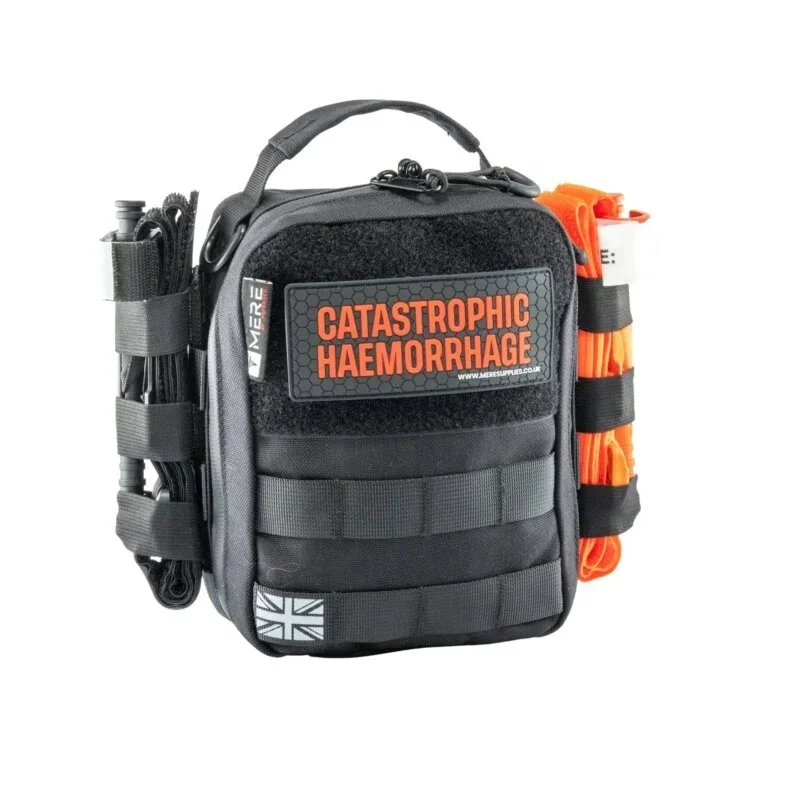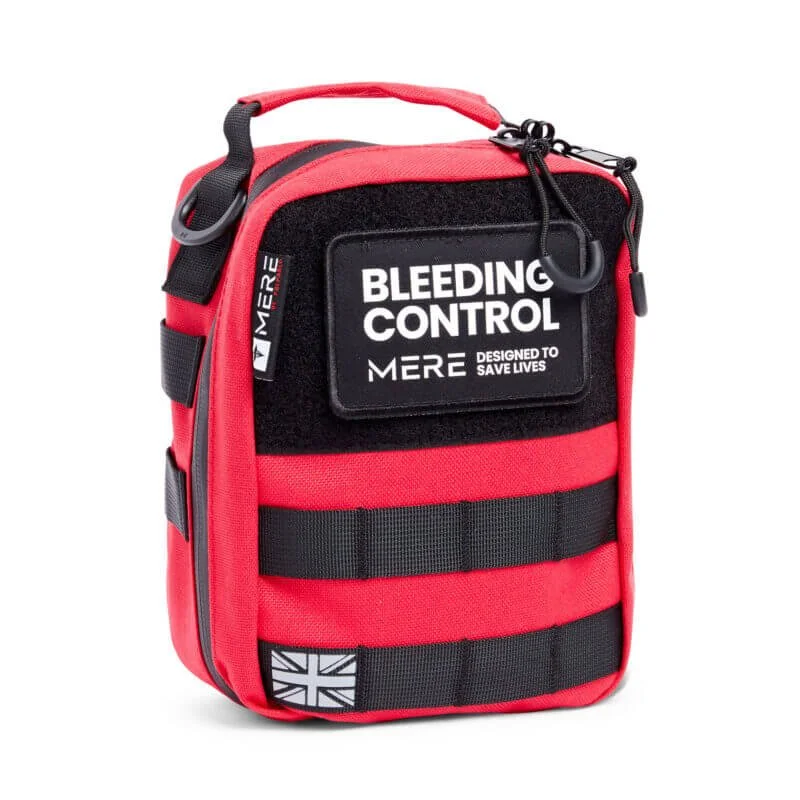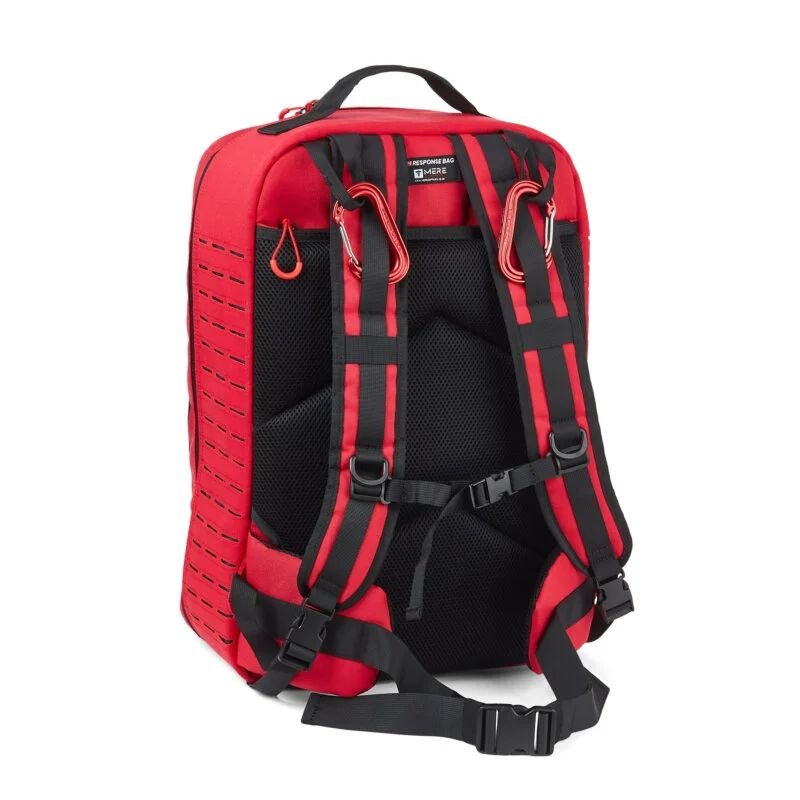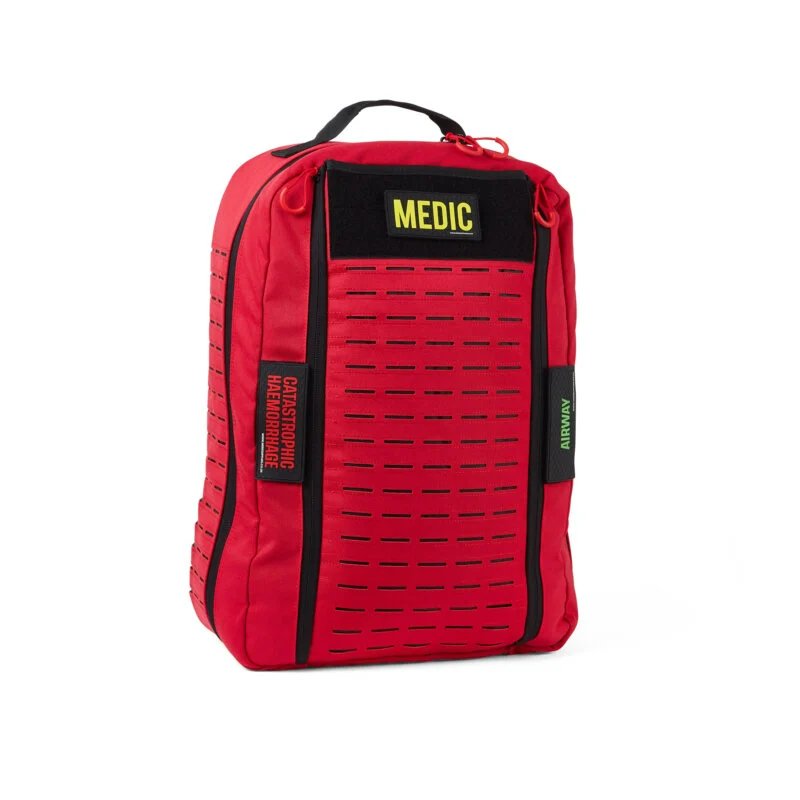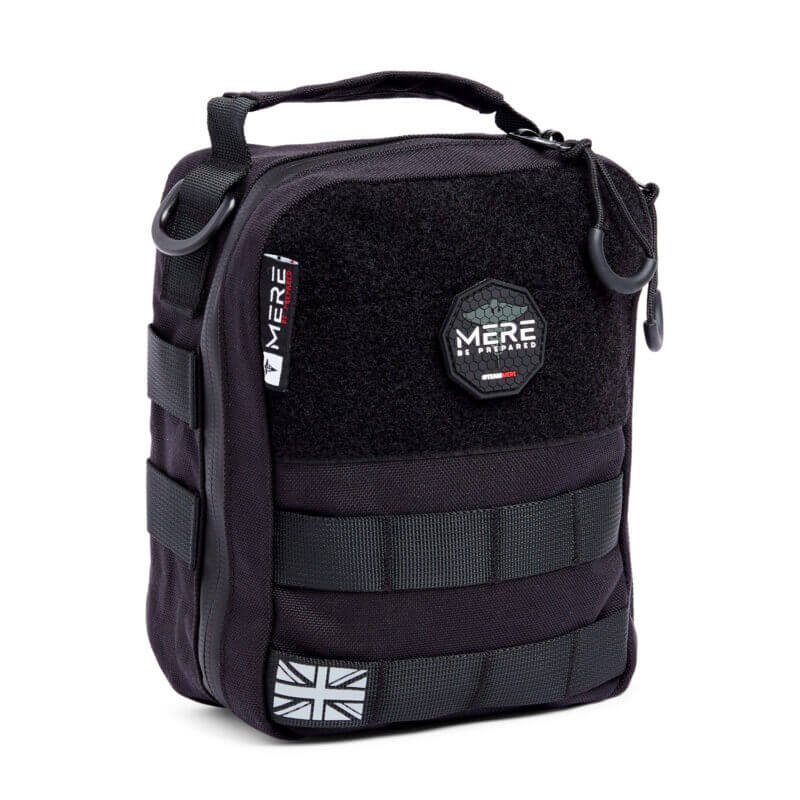Mastering Emergency Response: The Essential Guide to First Aid Kits, Bleed Kits, FREC3 & 4 Response Kits.
In an era where safety and preparedness are more than just buzzwords, the significance of being equipped to handle emergencies cannot be overstated. Whether it’s a minor injury at home, a critical incident in a high-risk workplace, or an unforeseen emergency in public spaces, the right response can be the thin line between life and death. This brings into focus the crucial roles of first aid kits, bleed kits, and FREC3 & FREC4 response kits.
However, the presence of these kits alone isn’t enough to ensure safety. It’s the knowledge and skill in their use that turn them from mere assortments of items into powerful means of saving lives. The question then arises: how do you choose the right kit? And more importantly, how can individuals and organisations ensure that they are adequately trained to use these kits effectively in an emergency?
This blog looks at the intricacies of selecting and utilising these essential emergency response tools. From assessing the specific needs of your environment, understanding the legal and practical requirements, to embracing the culture of preparedness and training, we explore the multifaceted approach to emergency readiness. Whether you’re in the boardroom, on the manufacturing floor, or ensuring the safety of a high-profile individual, the insights shared here aim to empower and educate, ensuring that when emergencies occur, you are not just reacting, but responding with confidence and competence.
What are in these kits?
First Aid Kits
Standard first aid kits are designed to handle minor injuries or stabilize more severe conditions until professional medical help can arrive. The contents can vary depending on the intended use (e.g., workplace, home, vehicle), but typically include:
Sterile dressings of various sizes for covering wounds
Adhesive bandages (plasters) in different sizes and shapes
Triangular bandages for creating slings or wrapping injuries
Safety pins for securing bandages
Sterile eye dressings
Disposable sterile gloves
Cleansing wipes that are alcohol-free for cleaning the skin around wounds
Tape for securing dressings or bandages
Scissors and tweezers for cutting dressings or removing debris from wounds
Ice packs for reducing swelling
Foil blanket for retaining body heat
CPR face shield for providing barrier protection during CPR
Burn dressings for initial burn treatment
Saline solution for eye washing or cleaning wounds
Life Threatening/Catastrophic Bleed Kits
Bleed kits are specifically designed to address significant bleeding, including catastrophic haemorrhages. They include:
Tourniquets for stopping blood flow to a limb in case of severe bleeding
Hemostatic dressings which contain agents that promote rapid blood clotting
Pressure bandages for applying constant pressure to a wound
Gauze bandages for wound packing or providing additional pressure
Trauma shears for cutting clothing or fabric to access wounds
Gloves to maintain hygiene and protect the rescuer
Instructional booklet or card with guidelines on how to use the contents
FREC Level 3 & Level 4 Response Kits
FREC (First Response Emergency Care) kits are more advanced and tailored for individuals trained in providing pre-hospital care at levels 3 and 4. These kits build upon the basics and include specialised items:
Advanced airway management tools such as nasopharyngeal airways (NPA) and oropharyngeal airways (OPA)
Pulse oximeter for measuring oxygen saturation
Blood pressure cuff (sphygmomanometer)
Stethoscope for auscultation of heart and lung sounds
Emergency dressings including Israeli bandages or other pressure bandages
Splints for immobilising fractures or dislocations
Thermal blankets for managing hypothermia
Burn dressings and gel for comprehensive burn care
Suction devices for clearing airways
Traction splints (more likely in FREC4 kits) for certain types of fractures
The exact contents will vary based on the provider, local regulations, and the specific environment the kit is intended for. It's crucial that individuals trained to use these kits are familiar with every item and competent in their application under emergency conditions.
Who needs these types of kits?
The need for different types of emergency response kits—first aid kits, bleed kits, and FREC3 & FREC4 response kits—varies across a wide range of environments, reflecting the unique safety requirements and risks associated with each setting. Here’s a breakdown of who might need these kits:
First Aid Kits
Widely Needed Across All Settings.
Homes and Vehicles: For treating minor injuries and stabilizing more severe conditions until professional help arrives.
Workplaces: Required by health and safety regulations in many countries, including the UK, to ensure immediate care is available for minor injuries.
Schools and Universities: For handling everyday minor injuries and emergencies involving students and staff.
Public Venues and Events: To provide first aid in places where people gather in large numbers.
Sports Clubs and Fitness Centres: To manage common injuries like sprains, cuts, and bruises.
Life Threatening/Catastrophic Bleed Kits
Essential in High-Risk Environments.
Industrial and Construction Sites: Where the risk of significant injuries and catastrophic bleeding is higher.
Law Enforcement and Security: Officers and personnel may encounter situations where immediate haemorrhage control is critical.
Shooting Ranges and Hunting Clubs: Environments where firearms are used, and there's a risk of gunshot wounds.
High-Risk Sports and Adventure Activities: Such as mountaineering, motorsports, or any activities where the potential for severe trauma exists.
FREC3 & FREC4 Response Kits
For Advanced Pre-Hospital Care Providers.
Event Medical Providers: At sports events, concerts, or large public gatherings where there's a need for immediate advanced medical response.
Private Ambulance Services: Offering rapid response capabilities beyond basic first aid.
Search and Rescue Teams: Operating in remote environments where professional medical help may be delayed.
High-Risk Workplaces: Such as offshore installations, remote mining sites, and large industrial plants where advanced first aid response can significantly impact outcomes.
Community First Responders and Volunteer Medics: Who provide initial care in emergency situations before ambulance services arrive.
In summary, the need for these kits is determined by the level of risk present in the environment, the potential severity of injuries that could occur, and the presence of individuals trained to use the contents of the kits effectively. Ensuring the right type of kit is available in the right setting can save lives and mitigate the severity of injuries in emergency situations.
Why is it so important for people to have these types of kits at their workplace or home environment?
Having these types of kits in the workplace or home environment is crucial for several reasons, emphasizing the importance of preparedness, immediate response, and the potential to save lives. The key reasons include:
Prompt Response to Injuries and Medical Emergencies
Immediate Care: The availability of first aid, bleed, and FREC3 & FREC4 kits allows for the immediate treatment of injuries or medical conditions, which can be critical in the golden hour of emergency care.
Mitigation of Severity: Early intervention can significantly reduce the severity of an injury or medical condition, preventing complications and promoting faster recovery.
Compliance with Health and Safety Regulations
Legal Requirements: In many jurisdictions, including the UK, employers are legally required to ensure that adequate first aid facilities and equipment are available to employees. This includes providing access to appropriate first aid kits and trained personnel.
Workplace Safety: Having these kits on-site contributes to a safer working environment, demonstrating a commitment to employee well-being and safety.
Empowerment and Confidence Building
Empowering Individuals: Training in the use of first aid and emergency response kits, coupled with the availability of these kits, empowers individuals to take decisive action in an emergency, potentially saving lives.
Confidence: Knowing that these kits are available and that there are individuals trained to use them can increase the confidence of employees, guests, or family members in the safety of their environment.
Potential to Save Lives
Life-Saving Interventions: In the case of severe bleeding, cardiac arrest, or other life-threatening conditions, the immediate availability of appropriate kits and trained responders can be the difference between life and death.
Critical in Remote or Delayed Response Areas: In locations where emergency medical services may be delayed, having these kits and trained individuals on-site is even more critical.
Economic Benefits
Reducing Costs: Prompt treatment of injuries can reduce the need for extensive medical intervention, thereby lowering healthcare costs and minimizing lost time from work due to injury or illness.
Community and Societal Impact
Enhanced Community Resilience: Equipping workplaces and homes with these kits, and the training to use them, enhances the overall resilience of the community to emergencies, contributing to public health and safety.
In summary, the importance of having first aid, bleed kits, and FREC3 & FREC4 response kits in both the workplace and home environments cannot be overstated. They are vital components of an effective safety and health strategy, providing the means to respond effectively to accidents and emergencies, ensuring compliance with legal requirements, and ultimately contributing to the saving of lives and reduction of injury severity.
How much do these kits cost on average?
The cost of first aid kits, bleed kits, and FREC3 & FREC4 response kits can vary widely based on the contents, quality, and the specific provider. Here's a general overview to give you an idea of the average cost range you might expect for each type of kit:
First Aid Kits
Basic Home or Personal First Aid Kits: These can range from £10 to £50, depending on the variety and quantity of items included.
Workplace First Aid Kits: For more comprehensive needs, prices can range from £20 to over £100. The cost escalates with the kit's capacity to serve more people and the complexity of potential injuries it's designed to address.
Bleed Kits
Standard Bleed Control Kits: Prices for these kits start around £40 and can go up to £100 or more. Kits on the higher end of the price range typically include advanced items like tourniquets, haemostatic dressings, and pressure bandages.
FREC3 & FREC4 Response Kits
FREC Level 3 Kits: These advanced kits start from around £150 and can exceed £500. The price depends on the inclusion of advanced airway management tools, splints, and other pre-hospital emergency care items.
FREC Level 4 Kits: Given their even more advanced nature, including equipment for intravenous access, monitoring devices, and a broader range of emergency care tools, these kits can cost anywhere from £250 to £1000 or more.
It's important to note that the actual cost will depend on several factors, including the supplier, the specific components included in the kit, and any regulatory requirements that the kit meets. Additionally, while initial cost is an important consideration, the quality of the components, their shelf life, and the kit's overall effectiveness in an emergency are crucial factors to consider.
For businesses and individuals looking to purchase these kits, it's advisable to assess their specific needs based on the risks associated with their activities or environment and to consult with professionals to ensure that the kit they choose is appropriately equipped. Additionally, investing in training for proper use of the kit's contents can significantly enhance the effectiveness of emergency response efforts.
How do I know which kit to purchase?
Selecting the right emergency kit—be it a first aid kit, bleed kit, or a FREC3 & FREC4 response kit—requires careful consideration of your specific needs, environment, and the level of training of potential responders. Here’s a structured approach to help you make an informed decision:
1. Assess Your Risk
Environment Analysis: Evaluate the environment where the kit will be used. Is it a high-risk workplace like a construction site or a relatively low-risk environment like an office?
Common Injuries: Consider the most common types of injuries that could occur in your environment. For instance, workplaces with machinery might prioritize bleed control, while a sports facility might focus on sprains and fractures.
Potential for Severe Emergencies: Assess the likelihood of severe medical emergencies, such as catastrophic bleeding or cardiac arrest, which would require specialized equipment.
2. Understand Legal and Regulatory Requirements
Compliance: Check for any legal or regulatory requirements specific to your location or industry. For example, workplaces in the UK must comply with the Health and Safety (First-Aid) Regulations 1981, which dictate the minimum provisions for first aid.
3. Consider the User
Training Level: The choice of kit should match the training level of the people who are most likely to use it. Basic first aid kits are suitable for laypersons, while FREC3 & FREC4 kits are for those with advanced pre-hospital care training.
Accessibility and Ease of Use: Ensure the kit is user-friendly, with contents that are easy to identify and use, even under stress. Consider kits with clear instructions and quick-access compartments.
4. Evaluate Kit Contents
Essential Items: Ensure the kit includes all the essential items for the types of emergencies you’ve identified. For severe bleeding, ensure the presence of tourniquets and haemostatic dressings in a bleed kit. For advanced care, FREC kits should have airway management tools, splints, and possibly intravenous fluid administration equipment.
Quality and Reliability: opt for kits with high-quality, durable components that adhere to relevant standards or certifications. Quality equipment is more reliable and often comes with better manufacturer support.
5. Plan for Maintenance and Training
Maintenance: Check the expiry dates on items like sterile dressings and ensure you have a process for replacing used or expired components.
Training: Investing in training for the intended users of the kit can significantly enhance the effectiveness of the response in an emergency. Consider whether you need to arrange for first aid, bleed control, or FREC-level training.
6. Consult with Professionals
Advice from Experts: If you're unsure about the specific needs of your environment, consult with health and safety professionals or first responders. They can offer insights based on experience and help tailor your emergency preparedness to your unique context.
7. Review and Iterate
Regular Reviews: Emergency needs can evolve, so regularly review your kits and their adequacy for your current situation. Feedback from users and changes in personnel, layout, or operations can inform necessary updates to your emergency response capabilities.
By following these steps, you can ensure that you choose the right emergency kit for your needs, providing peace of mind and significantly enhancing the safety and preparedness of your environment.
Thinking about higher risk industries, such as manufacturing, security and close protection operatives, why is it so important for them to be trained in the correct and appropriate use of these types of kits they may need?
In higher-risk industries such as manufacturing, security, and close protection services, the importance of training in the correct and appropriate use of emergency kits—like first aid kits, bleed kits, and FREC3 & FREC4 response kits—cannot be overstated. The reasons for this are multifaceted and critically impact the safety, effectiveness, and overall resilience of the workforce in these sectors.
Immediate Response to Emergencies
Reducing Response Time: In high-risk settings, the difference between immediate and delayed medical intervention can be life-saving. Trained personnel can act swiftly and efficiently, reducing the time between injury occurrence and treatment.
Effectiveness in High-Pressure Situations: Training ensures that individuals can remain calm and effective in emergency situations, allowing them to apply their skills confidently under pressure.
Enhancing Safety and Reducing Severity of Injuries
Mitigation of Injury Severity: Correct use of emergency kits can significantly mitigate the severity of injuries. For instance, properly applying a tourniquet in cases of severe bleeding can prevent life-threatening blood loss.
Prevention of Secondary Injuries: Training helps individuals avoid common mistakes that can exacerbate injuries, such as improper bandage application, which can lead to circulation issues or worsen the injury.
Legal and Compliance Aspects
Regulatory Compliance: Many jurisdictions require that employees in high-risk industries receive specific levels of first aid and emergency response training. This ensures that workplaces meet legal standards for worker safety and care.
Reducing Liability: Proper training in the use of emergency kits can also reduce the liability of employers by demonstrating a commitment to best practices in health and safety.
Empowering and Building Confidence Among Teams
Building a Culture of Safety: Training empowers employees, fostering a culture of safety and mutual care. It signals an investment in the well-being of the workforce, which can improve morale and trust in the employer.
Confidence in Emergency Situations: Trained individuals are more confident in their ability to handle emergencies, which can lead to more effective and decisive action when it's most needed.
Economic Benefits
Minimising Downtime: Effective immediate care can reduce the severity of injuries, potentially decreasing the amount of time employees are away from work due to injury.
Cost Savings on Healthcare: Prompt and correct treatment of injuries can reduce the need for extensive medical treatment, surgeries, or rehabilitation, saving on healthcare costs.
Enhancing Professionalism and Capability
Professional Development: Training in emergency care and the use of response kits adds to the professional skills of the workforce, enhancing their overall capability and readiness to face challenges.
Reputation Management: Companies that invest in the highest standards of safety and emergency preparedness are often viewed more favourably by clients, partners, and regulators, enhancing their reputation and business opportunities.
Given these factors, training in the correct and appropriate use of emergency kits is a critical investment in the safety and effectiveness of operations, especially in higher-risk industries. It not only prepares individuals to respond to incidents more effectively but also contributes to a safer, more resilient working environment.
In the face of emergencies, the difference between mere readiness and true preparedness lies in the quality of response—a principle that holds paramount importance across all environments, especially in higher-risk industries such as manufacturing, security, and close protection services. The strategic selection and use of first aid, bleed kits, and FREC3 & FREC4 response kits, coupled with comprehensive training, form the cornerstone of effective emergency preparedness.
Understanding the specific needs of your environment is the first step in choosing the right kit. From basic first aid necessities in homes and low-risk settings to advanced life-saving tools in bleed and FREC kits for high-risk environments, the goal remains the same: to provide immediate and effective care that can save lives and mitigate injury severity. The cost of these kits varies, reflecting the diversity in content and capability required across different scenarios. However, the investment in quality emergency response equipment, and more importantly, in the training of those who may use it, is invaluable.
The importance of this investment cannot be overstated. In high-pressure situations where every second counts, trained individuals become invaluable assets. They not only ensure a swift and correct response that can drastically alter outcomes but also embody the principles of safety, preparedness, and resilience. Regulatory compliance, reduced liability, and economic benefits further underscore the necessity of this commitment.
As we contemplate the significance of emergency preparedness within our workplaces and communities, it becomes clear that it's not just about having the right tools, but also about cultivating the right skills and knowledge to use them effectively. This dual approach enhances safety cultures, builds confidence among team members, and ultimately, saves lives.
In conclusion, the journey towards exceptional emergency preparedness is marked by a deliberate emphasis on tailored solutions, quality investments in equipment, and, critically, in comprehensive training. By adopting this holistic approach, businesses and individuals alike can navigate the challenges of emergency situations with confidence, ensuring that when the unexpected occurs, they are truly prepared.



